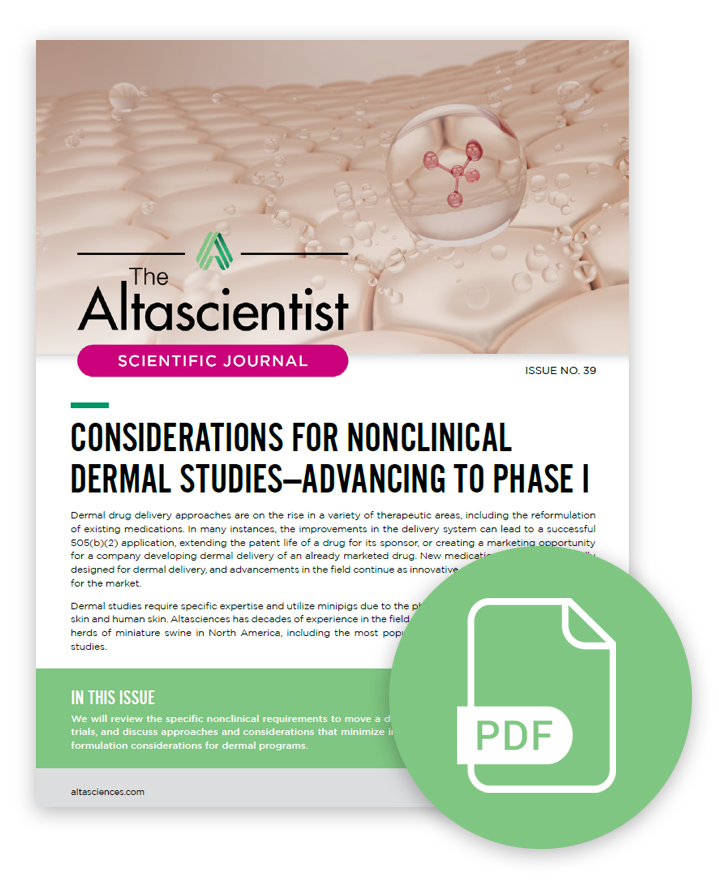ISSUE NO. 39 — Considerations for Nonclinical Dermal Studies: Advancing to Phase I

An increasing number of advanced methods for dermal drug delivery contribute to successful 505(b)(2) applications and extend the patent life of a drug for its sponsor. As a result, new medications and innovative approaches are continually being designed specifically for dermal delivery, creating new marketing opportunities for sponsors, including those developing previously marketed drugs.
Surveys have shown that patients prefer dermal routes of administration, and so dermal and transdermal drug delivery systems (TDDS), also known as patches, can provide greater patient compliance, ease of administration, and convenience—especially for conditions in which chronic use is necessary.
As is the case with all drug products, dermal therapeutics require stringent safety testing and regulatory compliance. By leveraging new methodologies, researchers are paving the way for more effective, patient-friendly options, providing the expertise and resources necessary to navigate this complex but promising landscape.
Issue 39 of The Altascientist explores the nonclinical prerequisites and considerations for advancing dermal programs to Phase I clinical trials—and addresses the challenges of efficiently delivering drugs to the skin's multi-layered structure.
This issue includes:
- species selection
- candidate selection for TDDS
- typical IND programs for dermal indication
- dermal-specific studies, such as phototoxicity and skin sensitization/irritation assessments
Explore all issues of The Altascientist in our Resource Center. And don’t forget to subscribe to The Altascientist: Audiobooks on Spotify, Apple Podcasts, or wherever you get your audio content.
Download publication